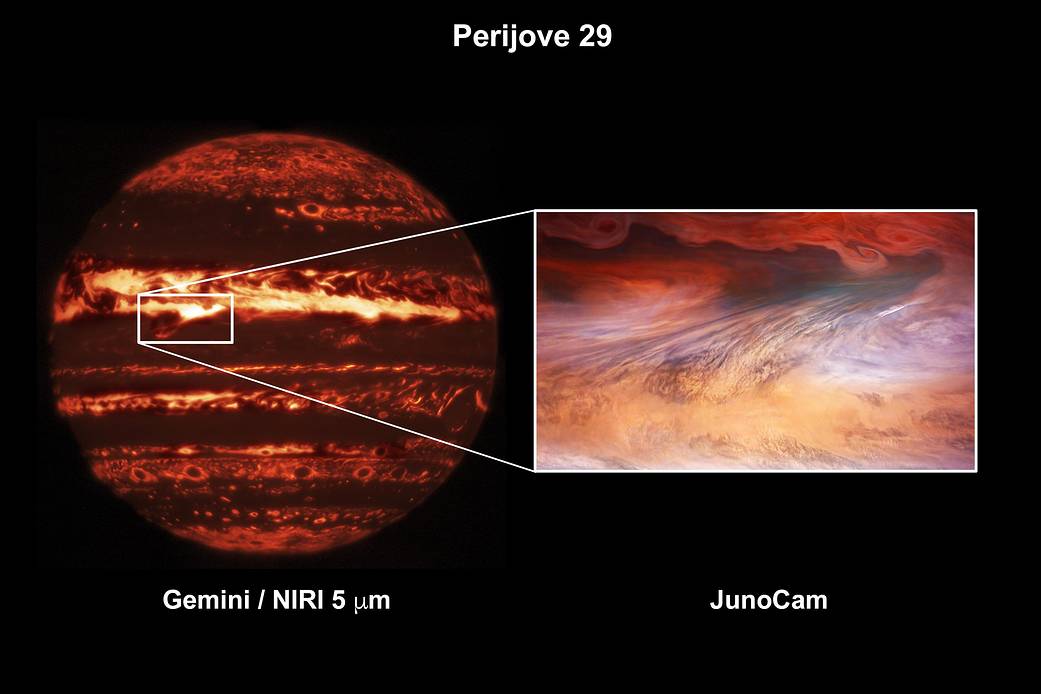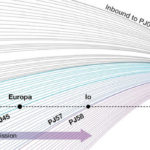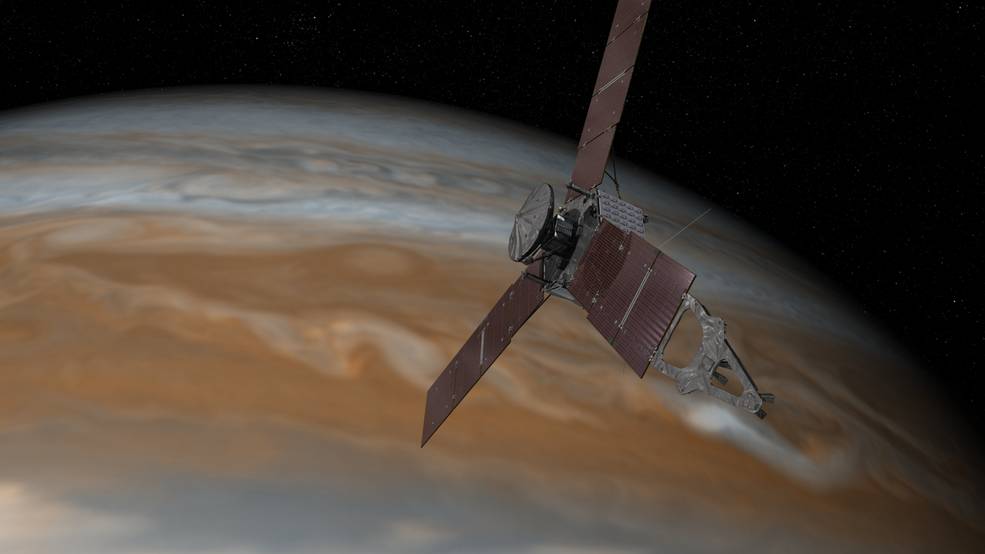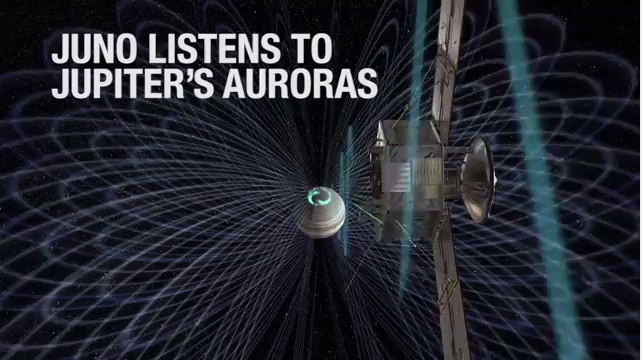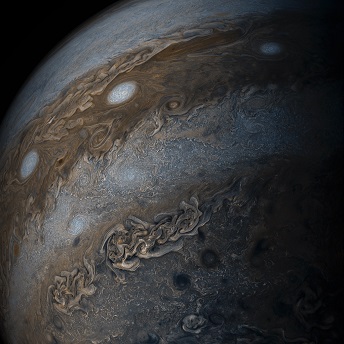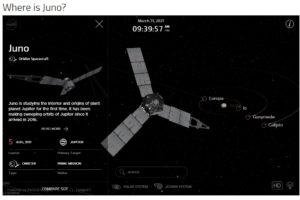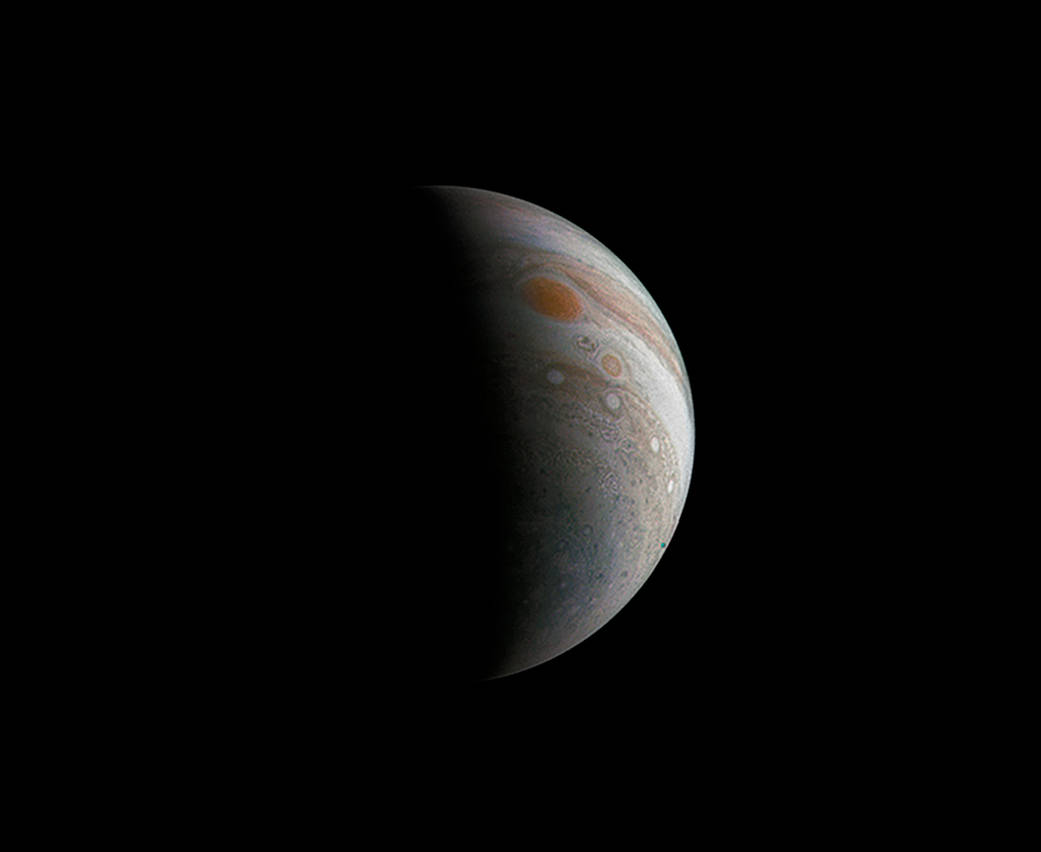木星大気に渦巻く謎のホットスポット。
同じところを同じタイミングで観測した画像が掲載されました。
地球からはジェミニ天文台の赤外線望遠鏡で撮影。
木星軌道からは木星探査機ジュノー搭載のジュノーカムによる撮影です。
NASAの公式サイトのURLはこちら
以下はオリジナル記事原文と和訳です。
A Hot Spot on Jupiter
This composite image shows a hot spot in Jupiter’s atmosphere. In the image on the left, taken on Sept. 16, 2020 by the Gemini North Telescope, the hot spot appears bright in the infrared at a wavelength of 5 microns. The inset image on the right was taken by the JunoCam visible-light imager aboard NASA’s Juno spacecraft, also on Sept. 16, during Juno’s 29th close pass by Jupiter. Here, the hot spot appears dark.
この合成画像は、木星大気のホットスポットを撮影したものです。 2020年9月16日にジェミニ北望遠鏡によって5ミクロンの波長の赤外線で撮影された左側の画像では、ホットスポットは明るく見えます。右側の画像は、同じ9月16日に29回目となるNASAの木星探査機ジュノーの木星最接近時に搭載されたジュノーカム可視光カメラによって撮影されました。こちらでは、ホットスポットが暗く見えています。
Jupiter’s hot spots have been known for a long time. On Dec. 7, 1995, the Galileo probe likely descended into a similar hot spot. To the naked eye, Jupiter’s hot spots appear as dark, cloud-free areas in the planet’s equatorial belt, but at infrared wavelengths they are extremely bright, revealing the warm, deep atmosphere below the clouds.
木星にあるホットスポットは以前から知られていました。 1995年12月7日にガリレオプローブが同じ様なホットスポットに降下しています。木星のホットスポットは、肉眼では木星の赤道帯の暗い雲のない領域として見えますが、赤外線波長の望遠鏡で見ると非常に明るく、雲の下にある暖かく深い大気の層を示しています。
High resolution images of Jupiter’s hot spots such as these are key to understanding the role of storms and waves in Jupiter’s atmosphere and to solving the mystery of Jupiter’s elusive water.
このような木星のホットスポットの高解像度画像は、木星の大気における嵐と波のような雲の流れの役割を理解し、木星のとらえどころのない謎を解くための鍵となります。
Citizen scientist Brian Swift processed the images to enhance the color and contrast, with further processing by Tom Momary to map the JunoCam image to the Gemini data.
民間の科学者のブライアン・スイフトが画像処理により色とコントラストを強調し、トム・モーマリーがさらにジュノーカムの画像をジェミニの画像にマップする処理しました。
The international Gemini North Telescope is a 26.6 foot (8.1 meter) diameter optical/infrared telescope optimized for infrared observations, and is managed for the NSF by the Association of Universities for Research in Astronomy (AURA).
国際ジェミニ北望遠鏡は、赤外線観測用に最適化された直径26.6フィート(8.1メートル)の光学/赤外線望遠鏡であり、全米天文学大学連合(AURA)によってNSFのために管理されています。
JunoCam’s raw images are available for the public to peruse and process into image products at https://missionjuno.swri.edu/junocam/processing. More information about NASA citizen science can be found at https://science.nasa.gov/citizenscience and https://www.nasa.gov/solve/opportunities/citizenscience.
More information about Juno is at https://www.nasa.gov/juno and https://missionjuno.swri.edu.
Gemini image: International Gemini Observatory/NOIRLab/NSF/AURA M.H. Wong (UC Berkeley)
JunoCam image: NASA/JPL-Caltech/SwRI/MSSS/ Brian Swift © CC BY / Tom Momary © CC BY
Last Updated: Jan. 22, 2021
Editor: Tony Greicius
